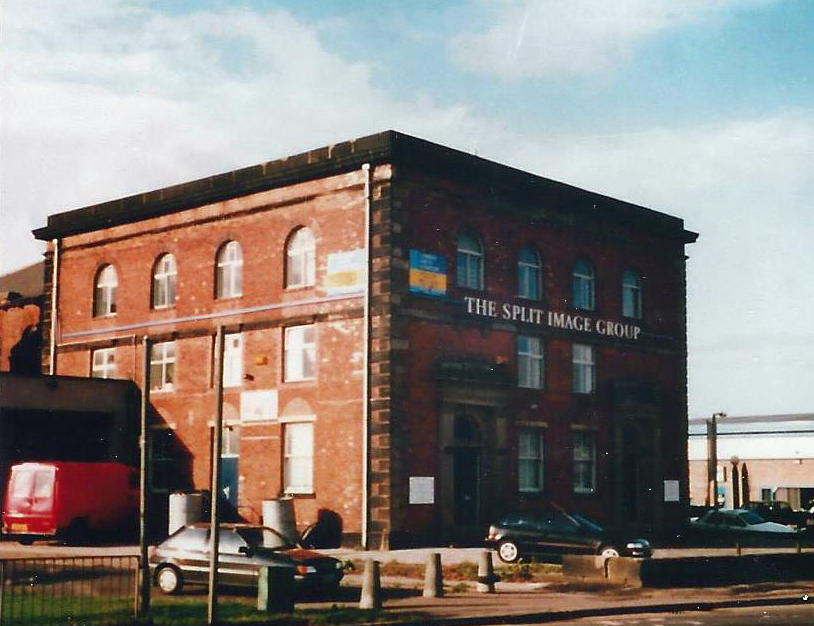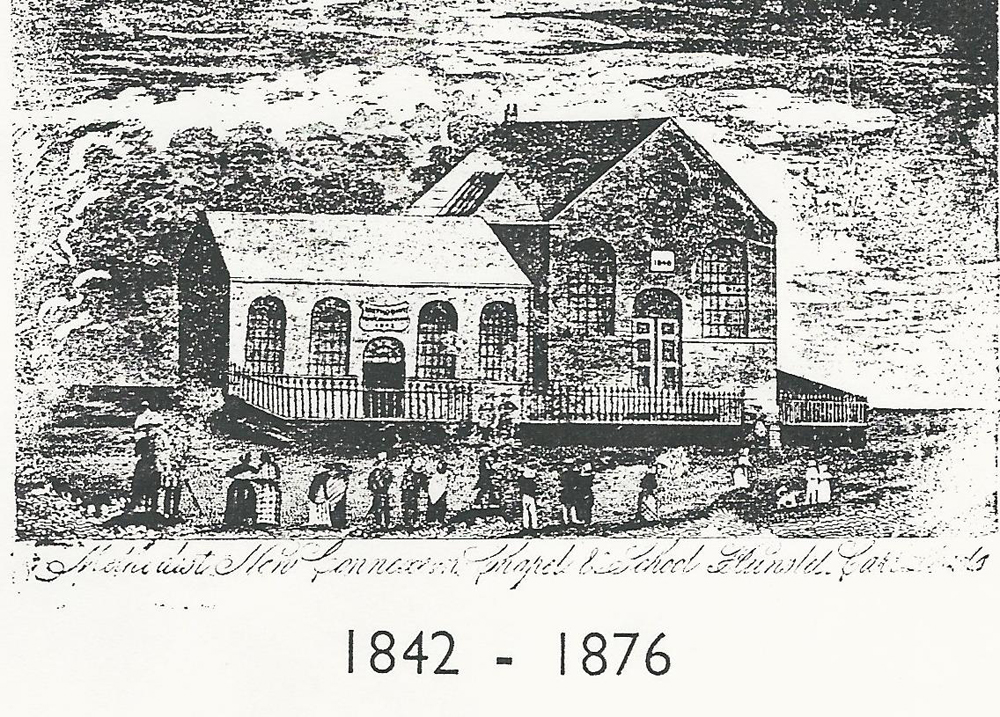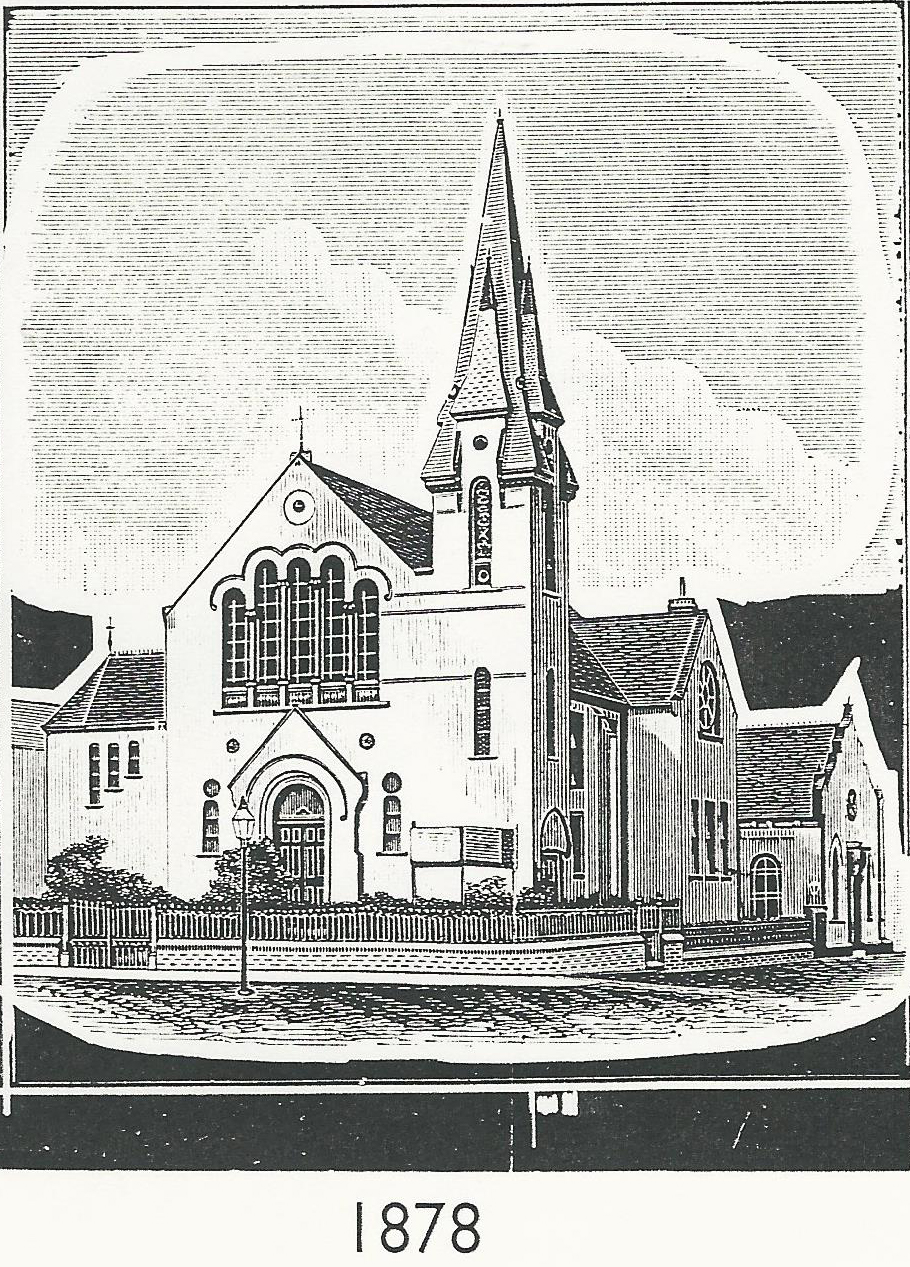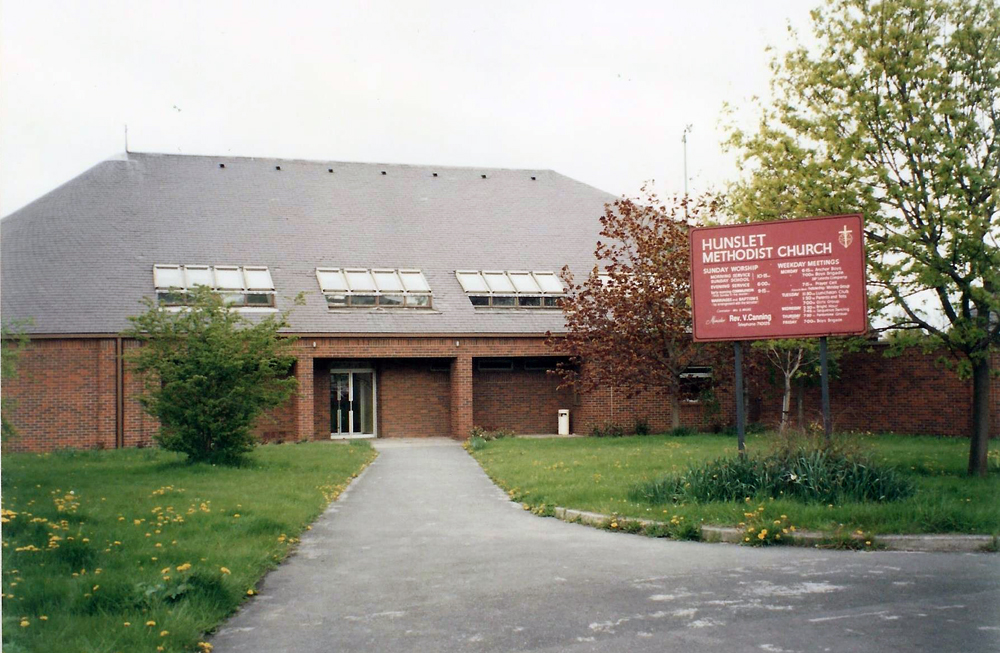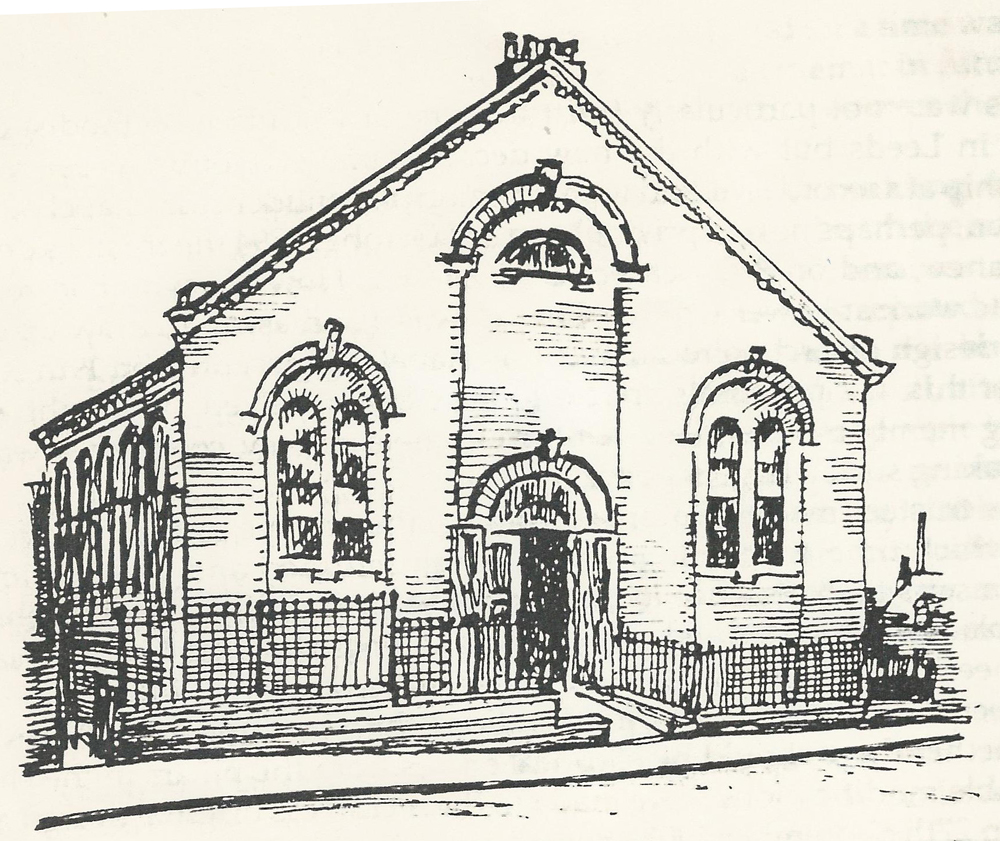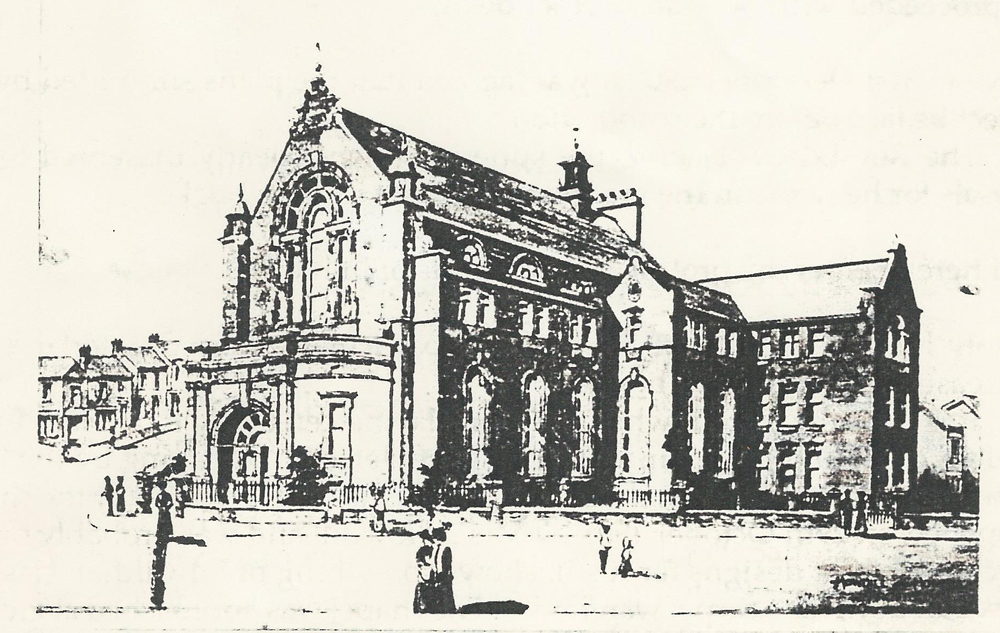Aspects of Leeds: Methodist History
Local History Project by Fred P. Langley, May 1996
1 Introduction and Overview
2 Beginnings of Methodism in Leeds
3 A New Connexion Formed in Leeds
4 The Brunswick Organ Controversy
5 Recollections of Leeds Methodists
Appendix 1 Bibliography & References
Appendix 2 Summary of Key Events & Dates
1 Introduction and Overview
The project concentrates on selected events in the history of Methodism relating to Leeds. These include the beginnings of Methodism here together with two significant episodes from the several schisms during the eighteenth and nineteenth centuries. Some contextual overview is provided, particularly with regard to the secessions and reunifications, and individual churches are referred to for illustration, including those within the recollections from the 1920's and 30's of two Leeds Methodists.
We start with a brief outline of the origins and development of Methodism. John Wesley (1703-91), brought up in the Epworth rectory, studied and lectured at Oxford from 1720 to 1735 apart from a brief spell as curate. In 1729 he joined the "Holy Club" at Oxford started by brother Charles and became its leader. The systematic pursuit of bible study and prayer accompanied by good works earned the group the derisive epithet of 'Methodist', which was readily adopted.
In 1735 John and Charles Wesley embarked on an ill-conceived and ineffective mission to the new colony of Georgia. During this and after his return two years later John was greatly influenced by Moravian theology. Following much soul searching from the challenge of this simple faith he felt his 'heart warmed' whilst at a meeting in Aldersgate Street in May 1738. About this time George Whitefield, formerly also of the Holy Club, returned from a much more successful mission to Georgia and gained prominence as a preacher with reforming zeal. The enthusiasm and radical strength of the message created fear and distrust from the lethargic body of the established Church. He was barred from its pulpits but started a religious revival in the open in and around Bristol. John Wesley was persuaded by Whitefield to go to Bristol to take over the work. This was the beginning of his great ministry.
A genius for organisation combined with powerful preaching and tireless journeying on horseback led to the establishment of Methodist societies initially in London and developing industrial towns, (Leeds 1742), then throughout Great Britain. John Wesley sought to revitalize the established Church of England—then little more than an appendage of the class system—and make it more relevant to the lower social orders rather than to found a separate denomination. His Journal [1] for 6 August 1755 records:
Our conference began in Leeds. The point on which we desired all the preachers to speak their minds was
'Whether we ought to separate from the Church?' Whatever was advanced on one side or the other was seriously and calmly considered; and on the third day we were all fully agreed in the general conclusion—that (whether it was lawful or not) it was no ways expedient.
At the Leeds conference in 1789 there was the same discussion and the same conclusion. The intention to keep one foot in the Anglican camp is illustrated in Davies et al [2] by reference to another Leeds conference
(1781) when members took communion in the Parish Church before their meeting.
However relations subsequently became increasingly strained, culminating in a final break with the Church of England a few years after Wesley's death (1795). He had established the system of control through annual conferences, originally in Bristol or London from 1744 with Leeds as a centre from 1753. Only a limited number of approved preachers could then attend conferences and the absence of lay involvement in decision making was much later to become a cause of friction and schism.
Through the nineteenth century the Wesley Methodist Church grew rapidly, mostly in the expanding urban areas, and by the end of the century there were 450,000 members. Because adherents were encouraged to live by such tenets as thrift, industry and sobriety the unintended result was that they become economically comfortable and unwilling to disrupt the established social order [3]. In Leeds and other cities many moved to better suburban housing and built new churches there [4]. This trend was a factor in the emergence of new Methodist groupings, notably the Primitive Methodists, having closer contact with lower paid workers and making a significant impact in early trade unionism.
Appendix 11 summarises the various stages of secession and reunification culminating in the formation of the present Methodist Church. More recently attempts were made to reunify the Anglican and Methodist Churches but the former body failed to gain a sufficient majority in favour. However ecumenical understanding and worship now feature much more strongly, as do initiatives designed to create greater social awareness and action against injustice. The Methodist 'Mission alongside the Poor' and the inter-denominational 'Faith in Leeds' programme are examples of this.
2 Beginnings of Methodism in Leeds
The introduction of Methodism into Leeds is well documented. The Wesley and Nelson diaries [1,5] provide primary evidence and Wray's detailed manuscript record [6] and Parsons [7] are early accounts discovered. An unusual source was found in three consecutive Brunswick Circuit plans for 1875 [8] and another early account was written by Elsworth [9]. In 1988, for the 250th anniversary of the Wesleys conversion, the Leeds Methodist District produced a booklet recalling the origins in Leeds [10] and there is a good summary account in Treen [11]. Colin Dews is the Leeds District archivist: he has written of the Leeds history with special reference to Armley [12]
These accounts are fairly consistent. Mary Shent heard gossip in husband William's barbers shop about John Nelson a Birstall stonemason. He had been converted by John Wesley in London after long seraching for spiritual satisfaction and, on returning to Birstall, began preaching in his own house, then outside it when the hearers became too numerous. Mary Shent heard of people 'flocking from every quarter to Birstall' and walked there from Leeds with two friends (also Marys) to hear him. Nelson also preached at Armley where thanks to his zeal a Methodist society formed in 1742. Dews [12] has researched the Armley connection and notes that the three Marys initially attended the society there 'travelling across the river and fields for this'. Nelson's Journal [5] records:
Now the Armley Society became a nursing mother to the new born souls at Leeds; for there were several steady souls at Armley , who had stood from the beginning without wavering; and I trust we shall meet together in heaven.
William Shent was won over by his wife's witnessing and 'having found the pearl of great price he freely told his customers of the fact.[8]
Nelson's diary records that Shent caused 'an uproar in Leeds, about his saying he knew his sins were forgiven' and continues with how he (Nelson) was invited to preach at Shent's shop. Despite threats before he arrived and missiles thrown whilst he preached the word spread and a small society of Methodists came into being. Charles Wesley wrote in his Journal [13] for May 29 1743 that less than a year before he had been to Leeds and found no man cared for the things of God, but:
a spark has now fallen in this place also, and it will kindle a great flame. I met the infant society, about fifty in number, most of them justified, and exhorted them to walk circumspectly. At seven o'clock I stood before Mr Shent's door, and cried to thousands, 'Ho! everyone that thirsteth, come ye to the waters! '
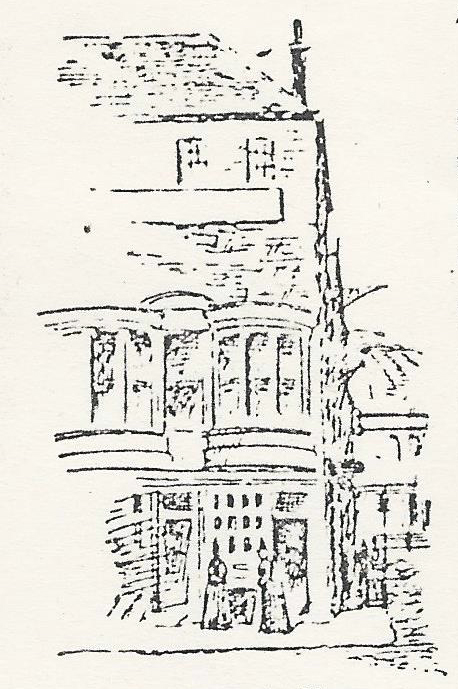 Shent's shop (see left) was located at the corner of Briggate and Duncan Street - as described by Wray [https://secretlibraryleeds.net/2017/08/04/methodism-in-leeds-wray-manuscript/]. The site is now occupied by the Yorkshire Building Society (see below) and there is a plaque stating:
Shent's shop (see left) was located at the corner of Briggate and Duncan Street - as described by Wray [https://secretlibraryleeds.net/2017/08/04/methodism-in-leeds-wray-manuscript/]. The site is now occupied by the Yorkshire Building Society (see below) and there is a plaque stating:
On or near this site stood the shop of William Shent Hairdresser and Peruke Maker where the first Methodist Services in Leeds were held in 1743.
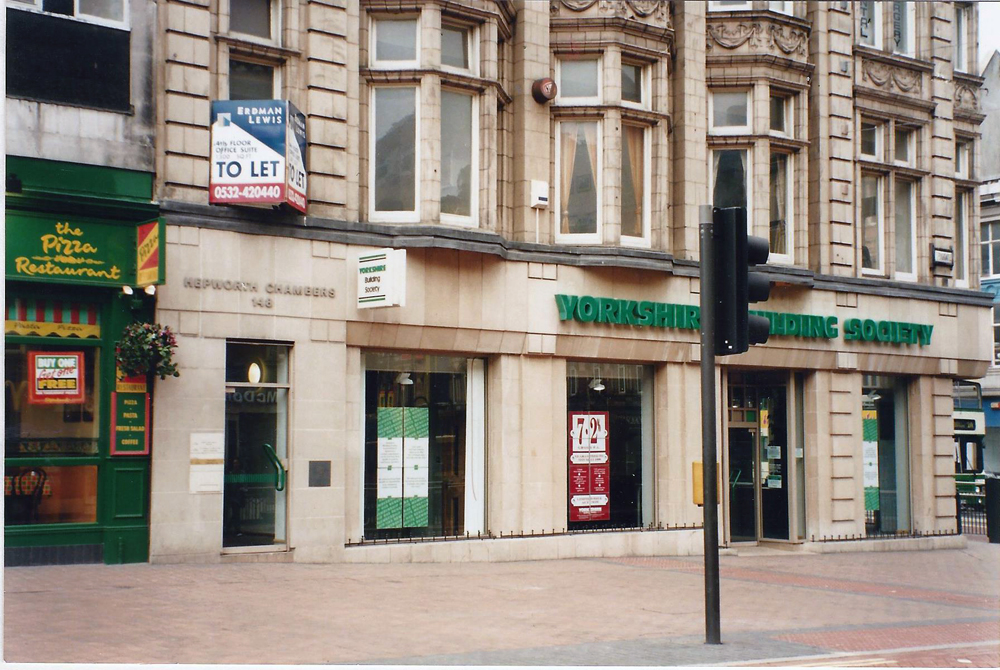
A building in Rockley Hall yard, Lowerhead Row, was then used as the preaching place [11] followed by a house at Nether Mills (or East Street as in [8]). then Ingram Hall 'a commodious and very suitable building which stood at the foot of Richmond Hill" [8]. Then the Methodists moved to the house of Matthew Chippendale, a basket maker, in Boggart Close. Plans for a new preaching house on this site were drawn up and the building constructed by first erecting the walls around Chippendale's house, then adding the roof before dismantling the house and throwing the debris out of the new windows. The new building was known as Boggart House and also the Old Chapel. Its location in St Peter's Square in the Quarry Hill area is shown on Tucker's first OS map of 1847 (see right, click to enlarge) . The Old Chapel was in use from 1751 (John Wesley preached there in that year) until 1835 when a much larger building, St Peter's Chapel (below right), was erected adjacent to it which Grady [14] notes would accommodate 2,500. Later the old Boggart House was carefully dismantled to provide building material for a new chapel at Richmond Hill, completed in 1849. The old Boggart House was the centre of developing Methodism in Leeds for over 80 years and the venue for a number of annual conferences. John Wesley's journal [1] for Sunday August 5th— two days before the 1781 conference—records:
. The Old Chapel was in use from 1751 (John Wesley preached there in that year) until 1835 when a much larger building, St Peter's Chapel (below right), was erected adjacent to it which Grady [14] notes would accommodate 2,500. Later the old Boggart House was carefully dismantled to provide building material for a new chapel at Richmond Hill, completed in 1849. The old Boggart House was the centre of developing Methodism in Leeds for over 80 years and the venue for a number of annual conferences. John Wesley's journal [1] for Sunday August 5th— two days before the 1781 conference—records:
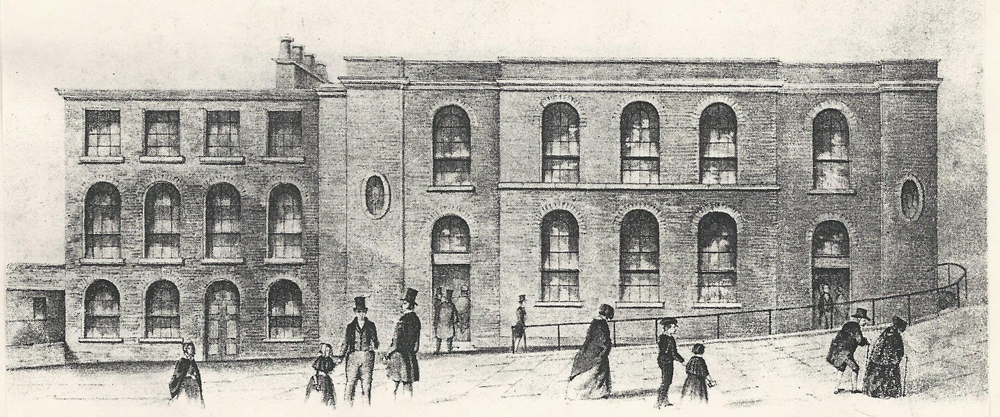 At the old church in Leeds we had eighteen clergymen and about eleven hundred communicants. I preached there at three; the church was thoroughly filled; and I believe most could hear ...
At the old church in Leeds we had eighteen clergymen and about eleven hundred communicants. I preached there at three; the church was thoroughly filled; and I believe most could hear ...
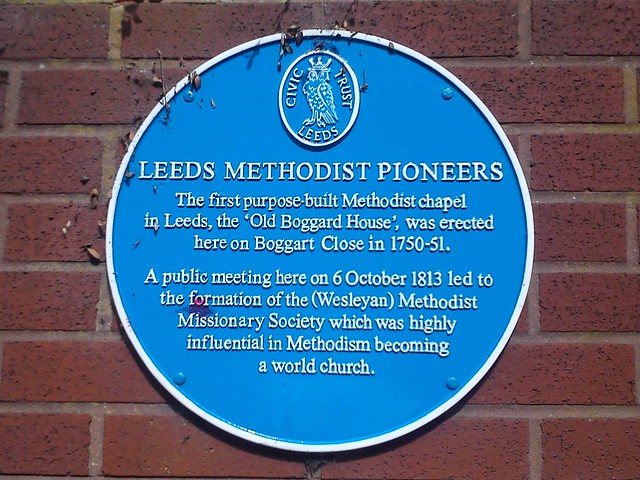 At Boggart House, as with other chapels, pew rents were paid for most seats and a record in the archives of the rents [15] for the period around the
At Boggart House, as with other chapels, pew rents were paid for most seats and a record in the archives of the rents [15] for the period around the
late 1760's shows that 2/6d was required per half year usually for one seat. William Shent's occupation is evidenced by one of a number of Leeds Circuit disbursements noted in Treen [11] -
17 August 1769 Paid William Shent for shaving and wig dressing at the Leeds Conference - £2.
Unfortunately he was later in disgrace and expelled from the Society. In June 1779 John Wesley wrote a letter demonstrating his concern and wish for forgiveness with a reminder of Shent's earlier fundamental role. The much quoted letter [inc 10,11,12] started:
I have a few questions which I desire may be proposed to the Society at Leeds:
Who was the occasion of the Methodist Preachers first setting foot in Leeds? William Shent
Who received John Nelson into his house at his first coming thither? William Shent
Who was it that invited me, and received me when I came? William Shent
Who was it that stood by me while I preached in the street with stones flying on every side? William Shent
with several more questions in the same vein before finishing:
You here all arise as one man and roll away the reproach. Let us set him on his feet once more ...
Mason's account of religion in Leeds [16] does not refer to the deeds of John Nelson and the Shents but outlines events at the other end of the social scale. These involve Lady Elizabeth Hastings of Ledsham, her half sister, Lady Margaret, and Selina Hastings, the Countess of Huntingdon. Margaret, who converted Selina, married Benjamin Ingham and both the Countess of Huntingdon and Ingham were influential in promoting strands of Methodism though not through the main Wesleyan channel.
Life was very difficult for the early Methodist preachers because of antagonism from the established church and a general suspicion about their political loyalties at a time when the country was in fear of 'Popery'. Mob violence was sometimes initiated by clergy and/or squires thinking the lower classes were getting ideas above their station and might rebel against authority. Dews [12] also suggests that some Methodists may have become unpopular through their arrogance. There are several references to threats and actual attacks including experiences at Leeds. John Wesley's
diary [1] for 12 August 1745 records:
came to Leeds, preached at five, and at eight met the society; after which the mob pelted us with dirt and stones great part of the way home. The congregation was much larger next evening; and so was the mob at our return, and likewise in higher spirits, being ready to knock out all our brains for joy that the Duke of Tuscany was Emperor.
An interesting episode concerning a visit of John Wesley to Leeds in 1750 is contained in an extract from a letter written in 1877 of which Stan Broster of Chapel Allerton has a copy. This refers to Wesley being driven out of Leeds by a mob and having an encounter with the writer's grandmother in Chapeltown , leading to his preaching there. A copy is included in Appendix 3. Another encounter is quoted in the Brunswick Circuit Directory for 1875 [8] :
When the Rev George Morley, governor of Woodhouse Grove School, was returning from the first Missionary Meeting held in Hull in the year 1814, he called at York to see a Christian woman who was said to be the oldest Methodist in the world. She was one of ten who constituted a Class in Leeds, before Mr Wesley visited the town ... and with great delight and enthusiasm she said 'When Mr Wesley first came to Leeds we took him into Society, he did not take us in. ' This Class was probably the fruit of John Nelson's labours.
Several local histories record that Methodist worship began in homes before chapels were built. For example in Shadwell a certificate was granted in 1794 to Matthew Dodgson to hold meetings in his farmhouse, the first chapel (now the library) not being built until 1814 [17]. In 1796 No 2 Chapel Row, Pool, was licensed for Methodist preaching and it was only in 1839 that land further down the row was bought for £15 so that a chapel could be built [18]. Similarly Methodists in Scholes held services in the granary of a farm on Main St until the Grays of Morwick Hall became Methodists, leading to the building of a chapel in 1878 [19].
During the late 18th and early 19th centuries there was rapid growth in membership of the Methodist church in Leeds and in the number of chapels built. Fraser [20] claims that one in every fifteen people in Leeds were members of a Methodist Society by 1811. In 1837 when WaIter Farquar Hook became Vicar of Leeds he stated: 'The de facto established religion is Methodism.' [16] Hook initiated a renaissance for the Church of England in Leeds and the period 1840-85 was regarded by Elsworth [9] as disastrous for Leeds Methodism with only one major new chapel opened (Roscoe Place in 1861). Subsequently, from the 1890's, there was a revival with many of the older church buildings which still survive being erected in the next two or three decades.
3 A New Connexion Formed in Leeds
For much of the nineteenth century good work done in the name of Methodism was marred by organisational and doctrinal disagreements leading to several schisms with overall reunification not coming into effect until well into the twentieth century. The summary and diagram in Appendix 2 sets out the main events and stages.
A few years before his death John Wesley prepared for his succession by a Deed of Declaration appointing a conference of 100 preachers to have authority in his stead. After his death in 1791 division developed between those, following Wesley, who considered separation from the Church of England undesirable and those who recognised Methodism as a growing organism. The right to administer the sacraments was restricted to preachers ordained by Wesley until in 1795 the 'Plan of Pacification' supplemented two years later by 'The Leeds Concessions' allowed for more flexibility and also gave the right to hold Methodist services in (Anglican) church hours. This completed the split with the Church of England.
 However, many problems remained, particularly as regards the preachers having total authority with no voice for the laity. Twice within 30 years Leeds was the focus for rebellion and secession from this cause. Alexander Kilham (1762-98) (left) was an itinerant preacher but also a reformer. He argued that the Plan of Pacification maintained the preachers' absolute authority in all matters and proposed a new constitution allowing for greater democracy. He was opposed by conservative preachers and summoned to appear for trial (1796) when he was expelled. Subsequent pressure for his proposed reforms led to a large delegation of trustees and other circuit representatives meeting with the conference in Leeds in 1797. Some concessions were made but not enough to satisfy many of the delegates.
However, many problems remained, particularly as regards the preachers having total authority with no voice for the laity. Twice within 30 years Leeds was the focus for rebellion and secession from this cause. Alexander Kilham (1762-98) (left) was an itinerant preacher but also a reformer. He argued that the Plan of Pacification maintained the preachers' absolute authority in all matters and proposed a new constitution allowing for greater democracy. He was opposed by conservative preachers and summoned to appear for trial (1796) when he was expelled. Subsequent pressure for his proposed reforms led to a large delegation of trustees and other circuit representatives meeting with the conference in Leeds in 1797. Some concessions were made but not enough to satisfy many of the delegates. 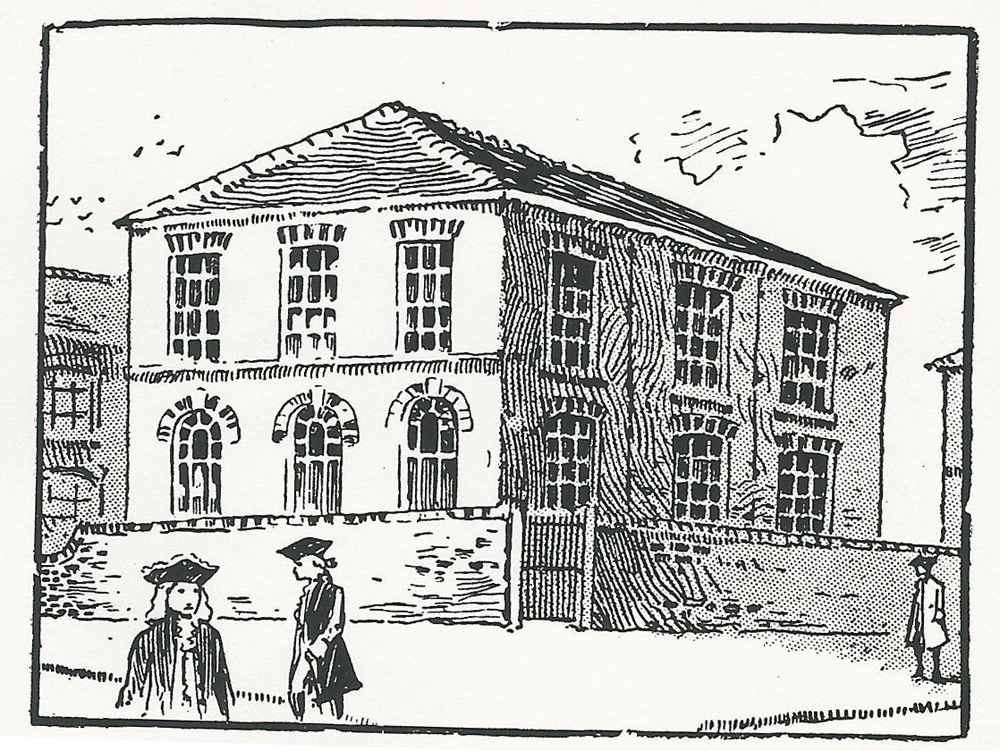 As a result three preachers (William Thom, Stephen Eversfield and Alexander Cummin) met with Kilham in Ebenezer Chapel (below right), Leeds, and formed 'The New Itinerancy', later called the 'Methodist New Connexion'. There was to be close cooperation between preachers and laity and new societies were to be formed wherever sufficient were in agreement with these principles. New Connexion societies developed in some centres, mostly in the north of England. Initially only about five of Methodists seceded though Fraser [20] suggests that about one quarter of the Leeds Wesleyans did so. After ten years membership was only just over 7,000 but by the jubilee year in 1847 this had grown to over 19,000. Kilham's far-sighted proposals were eventually adopted in Methodism generally but not for many decades after his early death at the age of 36. Leeds remained the main centre.
As a result three preachers (William Thom, Stephen Eversfield and Alexander Cummin) met with Kilham in Ebenezer Chapel (below right), Leeds, and formed 'The New Itinerancy', later called the 'Methodist New Connexion'. There was to be close cooperation between preachers and laity and new societies were to be formed wherever sufficient were in agreement with these principles. New Connexion societies developed in some centres, mostly in the north of England. Initially only about five of Methodists seceded though Fraser [20] suggests that about one quarter of the Leeds Wesleyans did so. After ten years membership was only just over 7,000 but by the jubilee year in 1847 this had grown to over 19,000. Kilham's far-sighted proposals were eventually adopted in Methodism generally but not for many decades after his early death at the age of 36. Leeds remained the main centre.
Dews [21] identifies sixteen New Connexion churches used in the period from 1797 to 1907 when the connexion merged with others to form the United Methodist Church. Eleven of these have since been demolished and only one (Trinity in Tempest Rd) is still in use as a Methodist church. (No longer: it is now a block of flats. -Ed).
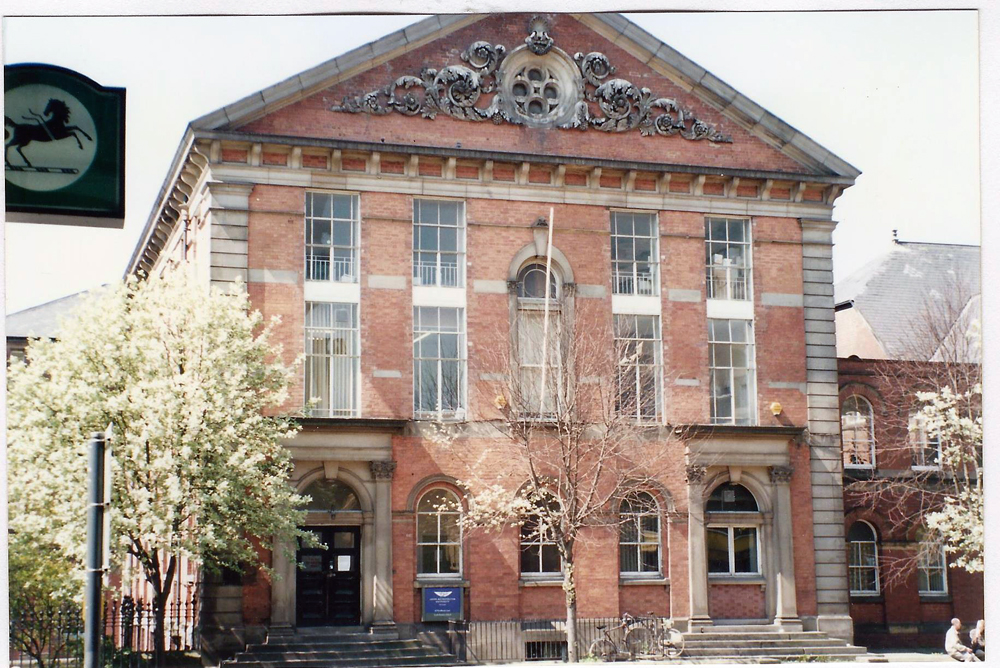 Left is a photo of the former Woodhouse Lane New Connexion Church, where the writer worked when it was part of Leeds Polytechnic. (It is now a pub, as is its extensive side building. Ed.) Two of the others with photos are referred to in personal recollections in Chapter 5.
Left is a photo of the former Woodhouse Lane New Connexion Church, where the writer worked when it was part of Leeds Polytechnic. (It is now a pub, as is its extensive side building. Ed.) Two of the others with photos are referred to in personal recollections in Chapter 5.
4 The Brunswick Organ Controversy
Click here for an image of Brunswick Chapel exterior
Click here for an image of Brunswick Chapel interior with organ
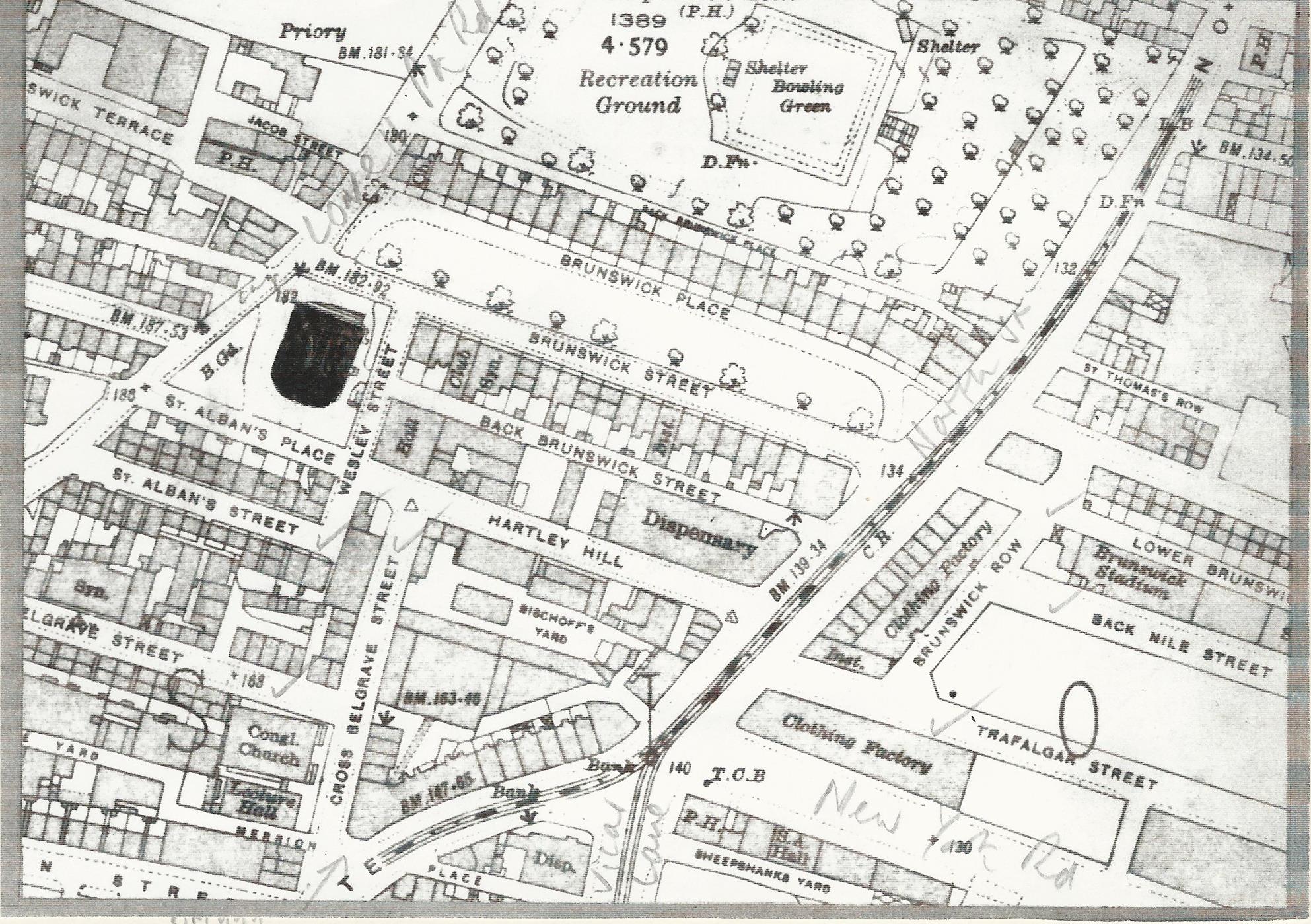 Brunswick Wesleyan Methodist Church was built in 1824/5 and, according to Brears [23], was 'once described as one of the largest and most magnificent ecclesiastical buildings in the empire.' It cost £10,600 and could accommodate over 2,400 people [14]. It was demolished in 1984 and the Yorkshire Bank head office is now on the site (see map). All that remains is the war memorial. Very early in its life, in 1826/7, the proposal to have an organ became a major controversial issue leading to another secession, though the continuing dissatisfaction about church government was the basic cause.
Brunswick Wesleyan Methodist Church was built in 1824/5 and, according to Brears [23], was 'once described as one of the largest and most magnificent ecclesiastical buildings in the empire.' It cost £10,600 and could accommodate over 2,400 people [14]. It was demolished in 1984 and the Yorkshire Bank head office is now on the site (see map). All that remains is the war memorial. Very early in its life, in 1826/7, the proposal to have an organ became a major controversial issue leading to another secession, though the continuing dissatisfaction about church government was the basic cause.
The annual conference was still for ministers only and they were determined to hold on to supreme authority whilst a gradual swell of opinion wanted more lay representation in Methodist affairs and greater self-government within circuits and churches. The Trustees at Brunswick wished to install an organ: even then it was only a narrow vote in favour with eight votes for, six against and one neutral from those present. The great majority of leaders and local preachers strongly opposed the proposal on the grounds that it would spoil the warmth and traditional simplicity of worship. There was also some prejudice at the time, an organ being considered a 'Popish' instrument. The Trustees appealed to the District meeting which supported the leaders by
rejecting the application. The Trustees however then appealed to the Conference and permission to install the organ was granted, no regard being paid to the opponents' views.
A local preacher, Matthew Johnson, called together fellow local preachers of the two Leeds circuits to protest but the meeting was officially deemed to be 'irregular' and Johnson was suspended for three months. As a result about a thosand members were either expelled or seceded and formed the Protestant Methodist Association. The first service was held in the Methodist New Connexion Church in Ebenezer Place on Christmas Day 1827. After meeting in various buildings the Leeds Protestant Methodists found a disused Baptist chapel in St Peter's St in 1828 (the Stone Chapel) and reopened it for worship. The Baptist congregation had moved to South Parade Chapel in 1826 [14]. The Protestant Methodists transferred to Lady Lane Chapel in 1840. It has clearly long since ceased to be a place of worship. Whilst societies were also formed in other towns the numbers were never large and in 1835 they merged with the Wesleyan Association becoming the Wesleyan Methodist Association.
A flavour of the language and arguments used in the debate can be discerned from the minute books of the Trustees [24] and the Leaders [25].
Here are extracts to identify the main stages.
Trustees 3 November 1826 - first mention
Resolved that an Organ shall be erected in Brunswick Chapel by public subscription . . . Resolved that the Trustees shall be put to no expense in the erection of the Organ . . .
Leaders 13 November 1826 - Rev Stanley, Superintendent Preacher and Chairman of the Trustees informed the leaders of the resolution, saying it was in response to
a petition signed by a number of the Seatholders. Several Leaders expressed their decided disapprobation of the measure, and the following Resolutions were passed nearly unanimously viz
First. It is the opinion of this meeting that the erection of an organ in Brunswick Chapel is not only unnecessary but would be a great Grief of mind to many persons who attend there as a departure from that Christian simplicity which ought at all times to characterize the Worship of Almighty God and which as a Society we have hitherto so richly enjoyed in the Methodist Chapels in this Town.
Second. That, as the Guardians of our Christian Privileges, and viewing it as not having any Warrant or sanction from the Word of God, we cannot consider the erection of an organ in any of our places of worship as a matter of indifference . . .
Also noted that a petition from about sixty Local Preachers against the organ was brought forward this evening but it was thought that the Leaders Meeting was competent to determine the
proper measures to be adopted.
Leaders 26 February 1827 - Subscriptions for the organ had been solicited during the previous week and Rev Stanley explained the history to the leaders. He said the leaders' rejection at the November meeting had been communicated to some of the trustees and
... one of their number (Mr Wm Smith of Woodhouse Lane) having occasion shortly after to go to London, took the opportunity of stating the case to one of the Elder Preachers who gave it as his opinion that the Leaders' meeting had nothing to do with it.
Trustees 14 May 1827 - Rev Stanley officially reported to the trustees the resolutions from the November leaders' meeting, and -
After a very long discussion ... it was agreed that Mr Stanley should be requested to inform the Leaders that the Trustees have taken the resolutions of the Leaders' meeting into their serious consideration, but they have determined to erect an Organ in Brunswick Chapel according to Methodist rule and Law.
Trustees 1 August 1827 - reported that a deputation from the Trustees attended the Conference at Manchester and presented an address to the President commencing:
We beg to present through you to the Conference the respectful petition of the Trustees of Brunswick Chapel for your sanction to their intention of erecting an Organ. Brunswick Chapel being the largest in the Methodist connection requires an Organ more than any other, it having been impossible for any individual to command the singing.
The petition continued with more background information, stated that the original requisition was from 76 Pew-holders and disparaged the leaders' opposition, for instance -
We cannot regard the objections of the Leaders as arising from any conscientious scruples on the use of instrumental music in the public worship of Almighty God. for only a few weeks after they had voted against the Organ they unanimously voted for a Violincello to a place recently taken for a Chapel!!! We also object to the interference of the Leaders because out of a meeting consisting of from 70 to 80 persons not more than 12 or 15 regularly worship at Brunswick Chapel.
Leaders 4 August 1827 - a special meeting
It was with the utmost astonishment that the Society had learnt that the Conference had sanctioned the introduction of an organ into Brunswick Chapel, contrary not only to the almost unanimous wish of this meeting but also to the judgment of the District Meeting.
The leaders prepared an 'address' to be presented to Conference by a deputation which, after some persuasion, was allowed to make their case to the Committee appointed to deal with the proposal, but -
...they were soon convinced that anything they could advance would avail nothing - they were told that the Local Preachers' meeting was illegal and they could not be recognised as having anything to do with it ...
... the Deputation urged the principles of the 'Plan of Pacification' as well as the usages of Methodism but without effect - they were told by Mr Watson the Chairman of the Committee that the right of conducting every part of the worship of Almighty God was with the superintendent preacher only and that neither Local Preachers, Leaders nor Trustees had any right to interfere ...
Trustees 14 August 1827 - reported that the deputation from leaders and local preachers had been heard by the committee at Conference and their appeal rejected.
Leaders and Local Preachers 17 August 1827 - resolved to send a deputation
to wait upon Mr Stanley to request him to call a meeting of the Trustees to consider the agitated state of the Society and to abandon the measure.
This was clearly unavailing as were other representations arranged and reported at further meetings on 22 and 27 August.
Leaders and Local Preachers 29 August 1827 - reported on failure and passed six resolutions including -
(3) ... such an assumption of power (by conference) lessens our confidence in them and that we are no longer under the same obligation as heretofore to contribute
towards the support of various funds connected with Conference ...
(5) The undersigned Local Preachers (36 in number) declare they will desist from Preaching in that chapel if an organ is introduced so long as it may remain.
Minutes of Local Preachers' meetings over that period [26] strangely included no reference to the controversy but dealt with routine matters only: presumably transactions of special meetings were recorded elsewhere. Equally surprising was that a search of The Intelligencer and Leeds Mercury for November 1826 and August 1827 revealed no mention of Brunswick Chapel.
5 Recollections of Leeds Methodists
In the 1920s there were three strands of Methodism [Appendix 1] - the Wesleyan Methodist (WM), the United Methodist (UM) and the Primitive Methodist (Prim) chapels. Often there would be one of each in a locality.
Hunslet Carr
Fred Saville remembers this period well. He lived as a boy and teenager in Hunslet Carr and attended Hunslet Carr UM, becoming a local preacher from the age of 19. This church was in Balm Rd at the old tram terminus and was relatively large compared with Woodhouse Hill Prim close by. A third church near the tram terminus was the Church of England Mission. Hunslet WM was only about half a mile away on Waterloo Rd. The proximity and density of local churches to residential areas reflected the limited means of public transport (mainly electric trams) in the period before motoring became common. Hunslet Carr UM, known as the 'little cathedral', was supported mostly by the tradesmen and shopkeepers of the district. It was popularly thought that the Primitives were more working class with the WM's tending to have professional or 'business' occupations and the UM's in between. These are however generalisations and most church congregations had a fair admixture across the social strata.
These four pictures show the stages in the development from theHunslet Carr New Connexion Chapel to the Hunslet Merthodist Church of today. A history of the Methodist church at Hunslet Carr in Fred's possession records that, through the initiative of Sunday School teachers at Hunslet Rd New Connexion Chapel, a building was first erected at Hunslet Carr in 1842 as a Sunday School (see photo left). By several stages this was later enlarged and a chapel and hall added . Its inadequacy to meet growing need became evident and the foundation stone for a new chapel was laid in May 1876. The record notes that on an evening the following January 'members of the congregation gathered to look over the new premises and select their respective pews.' The name changed from Hunslet Carr New Connexion Methodist Church to Hunslet Carr United Methodist Church in 1907 when a stage in unification took place [Appendix 1 ] but this apparently made little difference and there was no move to closer coordination with the neighbouring Primitive chapel.
Fred remembers that there was no animosity between the three local Methodist churches though perhaps a little competitive spirit. The main UM church for the circuit was Trinity on Dewsbury Rd. Fred. with other local preachers, had to walk or go by tram to preach at the circuit churches. There was however also much interchange of local preachers through the three branches and districts. It is believed that the WM's had a quarterly preaching plan arranged at circuit level whereas the UM and Prim churches made their own arrangements and gave invitations to preach to anyone they wished. Popular preachers could soon have their diaries filled: one such was an old railwayman, William Clayton, who rarely had a Sunday free. In the 1920s local preachers could administer the sacraments of baptism and holy communion and there was considerable freedom in planning the form of service. As regards music the reliance on choirs and soloists together with harmoniums or other instruments preceded the later dominance of the organ. Many of the choirs reached a high standard and competed in local eisteddfods. They produced soloists of considerable talent and local eminence. It is probably true to say that popular culture was given to the community more through the medium of chapels than from any other source.
The areas covered by the three circuits for the three branches of Methodism were thus much criss-crossed by preachers travelling to their appointments and they would often greet fellow preachers in passing. The situation locally and nationally was ripe for the rationalisation that would only be possible with reunion and this took place in 1932. However it was a very slow process of integration largely determined by pragmatic considerations affecting individual churches. It was not until 1970 that the Methodists eventually came together in a single new building in Balm Rd, known as Hunslet Methodist Church.
Armley
There were many similarities in the Armley area where Gertrude Taylor attended Southfield Prim in Wesley Rd from the age of 13 in 1919. Here the proliferation of chapels and churches was even greater with Hall Rd UM, Armley WM also in Wesley Rd, Whingate WM in Tong Rd, Branch Rd Prim, Silver Royd Hill Prim, Tong Rd Methodist New Connexion, and Armley Mission Hall (WM) in Mistress Lane all within a mile of each other - not to mention other denominations.
As at Hunslet Carr the evening service was the main one. Gertrude remembers that the young people would sit in the balcony, the young men on one side and the young ladies on the other. This segregation was not however continued after service when it was the usual practice, summer or winter alike, to take a stroll over Armley Hill. There were some free pews at Southfield but most were rented and a notice appeared each year to the effect that the church would be open on a given date 'for letting of pews and Mrs Ricketts will wait on seatholders.' Several families retained the same pews over many years.
Again there was no apparent animosity, but also little intermixing - with two notable exceptions, sport and music. Most chapels had their own sports fields and, particularly in the cricket season, would compete with each other. Gertrude also recalls the prominence of choral and solo singing. Most chapels had very good choirs and would augment each other for oratorios and musical festivals. Church anniversaries were big occasions with a grand tea and concert on the Saturday preceding Sunday worship led by an eminent preacher. Bazaars were also important events and could last over three days. In fact, as at Hunslet Carr, much of the social life in Armley stemmed from chapel activities. In terms of spirituality it is Gertrude's opinion that this may have been less evident than often characterises relatively smaller numbers attending churches today.
At Southfield Prim a mix of occupations were represented in the congregations though they were generally thought to be more 'working class' by comparison with those at Armley WM. A few had their own businesses and it was popularly reckoned that chapel attendance provided good contacts.
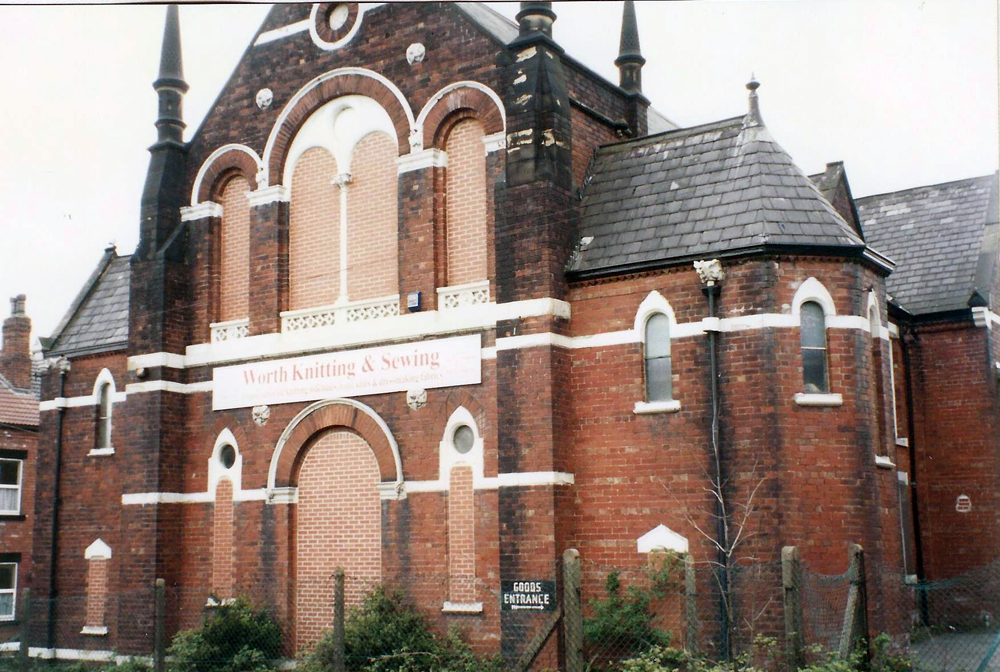 Methodist union in 1932 had little effect on local attachments and organisation. When changes did eventually take place they mostly resulted from trends in church attendance. The Southfield Prim building (see photo) was sold in the 1950s, the members merging with the UM at Hall Rd. This in turn was transferred to the Baptists and members joined other local churches.
Methodist union in 1932 had little effect on local attachments and organisation. When changes did eventually take place they mostly resulted from trends in church attendance. The Southfield Prim building (see photo) was sold in the 1950s, the members merging with the UM at Hall Rd. This in turn was transferred to the Baptists and members joined other local churches.
Armley Branch Road Primitive Methodist Chapel( see next photo), designed by Thomas Howdill, was opened probably in 1877, replacing the original Ebenezer. It later became a cinema and then a bingo hall. A new and larger chapel (see following photo), designed by Thomas Howdill and his son, the third chapel of this Society in half a century, was opened in 1905. It is now a carpet warehouse.
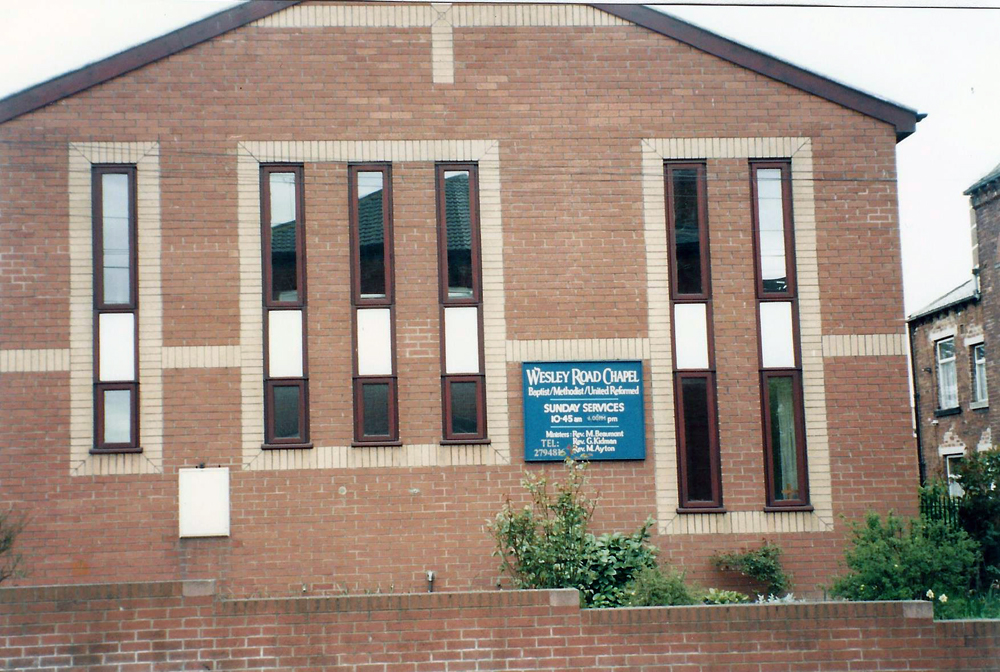 None of the chapels referred to, except for Whingate, remain as Methodist places of worship. Most congregations merged in the Armley Central Methodist Church in Wesley Rd, subsequently to be replaced by the present Wesley Road Chapel, an ecumenical building linking Baptists, Methodists and United Reformed Church members.
None of the chapels referred to, except for Whingate, remain as Methodist places of worship. Most congregations merged in the Armley Central Methodist Church in Wesley Rd, subsequently to be replaced by the present Wesley Road Chapel, an ecumenical building linking Baptists, Methodists and United Reformed Church members.
Appendix 1: Bibliography, References
1 Journal of John Wesley, using A. Mattison, Extracts from JW Journal Relating to Yorkshire and an abridged version edited by N. Ratcliff (Nelson 1940)
2 Davies, George & Rupp (ed), A History of the Methodist Church in Great Britain (Epworth 1978)
3 Davies, R.E., Methodism (Epworth 1985)
4 Ward, W.R., Religion and Society in England 1790-1850 (Batsford 1972)
5 Journal of Mr John Nelson (Local History Library)
6 Wray, J., A Compilation of facts illustrative of Methodism in Leeds
7 Parsons, E., History of Leeds Vol II (1834)
8 Brunswick Circuit Directory 1875 (Archives)
9 Elsworth, Revd J., 'The Leeds Brunswick Circuit' , in Wesley Methodist Magazine 1906
10 Forsaith, P.S., A Kindled Fire: John and Charles Wesley and the Methodist Revival in the Leeds Area (1988)
11 Treen, W.E., Methodism in East Leeds - Richmond Hill (Wildblood & Ward 1947)
12 Dews, D.C., Think of Armley and Speak of Armley (1984)
13 Journal of Charles Wesley
14 Grady, K., Georgian Public Buildings of Leeds and West Riding (Thoresby Society 1989)
15 Old Boggart Pew Rent Book 1768-72 (Archives)
16 Mason, A. (ed), Religion in Leeds (Sutton 1994)
17 Shadwell (locally produced book 1978)
18 Seals, W.F., Methodism in the Otley Circuit
19 Talaga, S., Scholes is Our Village
20 Fraser, D. (ed), A History of Modern Leeds
21 Dews, D.C., Methodist Chapels in the Leeds Borough (Local History Bibliography 42)
22 Eayrs, G., A Short History and Handbook of the United Methodist Church (Hooks 1913)
23 Brears, P., Images of Leeds (Breedon 1992)
24 Brunswick Chapel Minutes of Trustees (Archives)
25 Brunswick Circuit Memoranda of Leeds Methodist Leaders and Society 1801 - 27 (Archives)
26 Brunswick Circuit Local Preachers Minute Book 1813 - 32 (Archives)
Appendix 2: Summary of Main Events and Dates
| 1703 |
John Wesley born |
| 1738 |
John Wesley conversion |
| 1742 |
First Leeds Methodist Society (Armley) |
| 1750 |
First Leeds Methodist Chapel (Old Boggart House) |
| 1791 |
John Wesley died |
| 1795 |
Plan of Pacification |
| 1797 |
The Leeds Concessions |
| 1797 |
Kilham led in liberating M'ism and giving societies more power - Meth New Connexion formed (Leeds) |
| 1811 |
Formation of Primitive M'ists after expulsion of Hugh Bourne and Wm. Clowes for participation in camp meetings |
| 1815 |
Formation of (Arminian) Bible Christians after expulsion of Wm. O'Bryan for unofficial evangelistic initiatives |
| 1827 |
Brunswick (Leeds) organ controversy - continuing problem of church gov't and authoritarian stance of Meth Conference - formation of Protestant Methodists |
| 1835 |
Formation of Wesleyan Meth Ass'n after expulsion of Dr Samuel Warren and others for pressing case for more lay involvement |
| 1836 |
Prot Meth united with Wes Meth Ass'n followed by other small groups |
| 1849 |
James Everett expelled after attacks on hierarchy (partic Jabez Bunting) via fly sheets - formation of Wesleyan Reform Society |
| 1857 |
Wes Meth Ass'n and Wes Reform Soc united to become United Meth Free Church |
| 1877 |
Mainstream Wes Meth Church finally admitted laymen to Conference after gradual constitutional reform |
| 1907 |
United Meth Free Church joined with Bible Christians and Meth New Connex to form United Meth Church |
| 1932 |
Meth Union of all branches - Meth Church in GB - owed much to work of John Scott Lidgett |
| 1969-72 |
Plans for reunion of C of E and Meth developed but insufficient C of E majority |
| 1982 |
Proposals for "Covenant of Visible Unity" to include C of E, Meth and others again failed. |
| 1740 |
1797 |
1811 |
1815 |
1827 |
1835 |
1836 |
1849 |
1857 |
1907 |
1932 |
| |
Primitive Methodists |
Methodist Church of GB |
| Wesleyan Methodists |
| |
Methodist New Connexion |
United Meth Church |
| |
Bible Christians |
United Meth Free Church |
| |
Protestant Methodists |
Merged |
| |
Wesleyan Meth Assocn |
| |
|
Wesleyan Reform Soc |
(Diagram reformatted from one hand-drawn by Fred Langley - Ed.)
Appendix 3: Extract from a Letter written by Thos. Greathead, Natal, South Africa, December 31st 1877
My late dear grandmother died, aged 86, in the full triumph of the faith of Jesus. She became a member of this Society at 12 years of age, and left a most interesting account. In
about the year 1750, Mr Wesley was driven out of Leeds by a mob, and made his way to Chapeltown and entered the first house of entertainment for refreshment. Finding the
landlord to be a man of general information, asked him with regard to the religion of the town. "Religion", he replied, "we have no religion here".
"But", enquired Mr. Wesley, "Is there no one who makes a profession more than another?"
"No! as to that, we are all much alike, unless it is old Ruth Greathead, she is much more regular in her attendance at church than anyone I know of".
Mr. Wesley, "Where does she live?"
The landlord named her residence and Mr. Wesley called to see her, when the following took place after the salutation of the day, Mr.Wesley said, "I hear you are a lone widow".
"No", she replied, "My two sons live with me."
Mr. Wesley: "What is their employment?"
Ruth Greathead: "They manufacture stuffs and calimancoes for their uncle who does largely in that line."
Mr. Wesley: "Well I hope you love and fear God".
Widow Greathead: "I hope I do, sir, I attend church regularly."
Mr.Wesley: "Well that is right", and after some other conversation Mr. Wesley said, "I should like to preach in this room this evening".
Ruth Greathead: "Why, who are you?"
Mr. Wesley: "I am John Wesley".
Ruth Greathead: "Oh! John Wesley, why I hear he creates mobs wherever he goes, I can't let you preach here."
Mr. Wesley told her that he never created mobs, it was the people who did not like his preaching, in telling them of their sins and exhorting them to flee from the wrath to come, and offering them salvation by faith in Christ, and added, some believed, and some believed not.
"Well", said Ruth Greathead, "I'll go and ask the parson if you may."
"No", replied Mr. Wesley, "I am a clergyman, you need not do that".
So after a good deal of difficulty Ruth Greathead consented. Mr. Wesley then sent to the Town Crier to announce that he would preach in Widow Greathead's house that evening. The room was crowded, and he preached Christ unto them. Mr. Wesley, seeing that they were very attentive, informed them that he would preach again at 5 o'clock the following morning. But oh! what a scene of uproar took place outside while all was peace within, for the parson, and esquire or justice of the peace had collected a band of roughs to disturb the congregation, but after awhile, the ringleader said, "Come away, lads, and leave those fanatics to themselves, we can do them no good", and Mr. Wesley preached with such power that several were convinced and converted, and among that number was Ruth Greathead and her son Thomas (my grandfather).
Edited by John S. Summerwill. Copyright © John S. Summerwill 2020. All rights reserved. |
 Shent's shop (see left) was located at the corner of Briggate and Duncan Street - as described by Wray [https://secretlibraryleeds.net/2017/08/04/methodism-in-leeds-wray-manuscript/]. The site is now occupied by the Yorkshire Building Society (see below) and there is a plaque stating:
Shent's shop (see left) was located at the corner of Briggate and Duncan Street - as described by Wray [https://secretlibraryleeds.net/2017/08/04/methodism-in-leeds-wray-manuscript/]. The site is now occupied by the Yorkshire Building Society (see below) and there is a plaque stating: 






 Left is a photo of the former Woodhouse Lane New Connexion Church, where the writer worked when it was part of Leeds Polytechnic. (It is now a pub, as is its extensive side building. Ed.) Two of the others with photos are referred to in personal recollections in Chapter 5.
Left is a photo of the former Woodhouse Lane New Connexion Church, where the writer worked when it was part of Leeds Polytechnic. (It is now a pub, as is its extensive side building. Ed.) Two of the others with photos are referred to in personal recollections in Chapter 5. 
